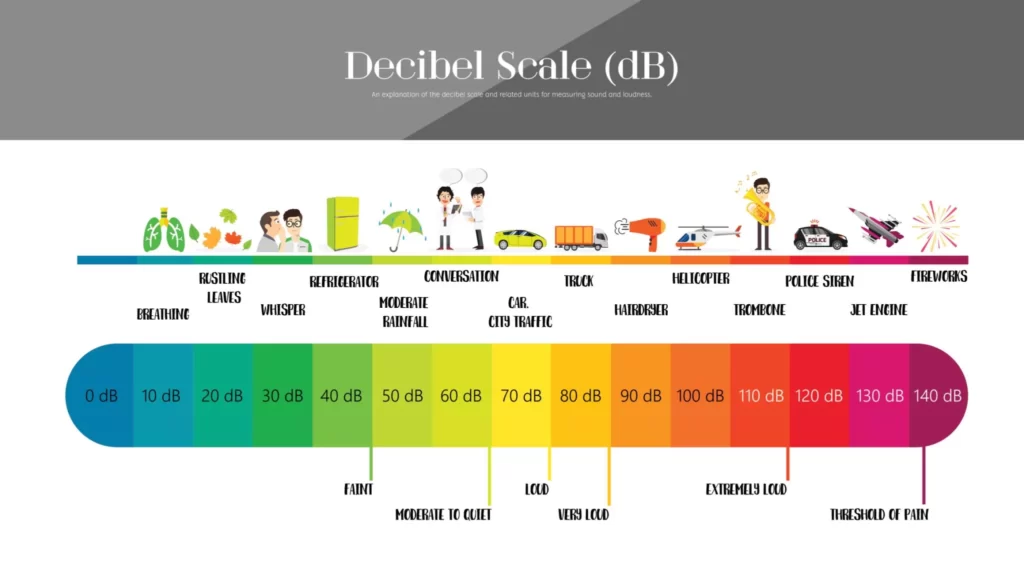Home | Treatments | Ear, Hearing Loss & Audiology | Protecting Your Hearing
10 Ways to Protect Your Hearing: Advice for Singapore Adults
Key Takeaways
– Hearing loss is often irreversible, making early prevention and safe listening habits essential for long-term ear health.
– Everyday noise exposure, whether from concerts, devices, or work environments, can accumulate over time, so protective measures like earplugs, lower volumes, and regular breaks play a key role in safeguarding hearing.
– Healthy lifestyle practices support the auditory system, including staying active, managing stress, and maintaining good ear hygiene without overcleaning.
– Routine hearing checks help detect changes early, allowing timely management of issues such as wax buildup, infections, or age-related hearing decline.
Hearing Loss is Potentially Irreversible
Hearing is integral to our overall well-being, enabling communication, connection, and enjoyment of life’s sounds and all it entails. Yet, it is often overlooked until issues arise. Hearing loss is not always reversible but is largely preventable with proactive care. Dr. Leslie Koh, a respected ENT specialist in Singapore, shares detailed and practical advice for maintaining optimal ear health. By following these 10 tips, you can take essential steps to protect and preserve your hearing.
How Loud is Too Loud?

To understand why certain environments can harm your hearing, it helps to know how loud everyday sounds actually are. The decibel (dB) scale is a logarithmic system that measures sound intensity, and small increases on this scale can translate into much greater pressure on the delicate structures of the inner ear. As you look at the dB chart, you’ll notice the scale ranges from 0 dB (breathing) up to 140 dB (fireworks). Sounds at or below 70 dB are generally considered safe for hearing. Sounds above 70 dB can cause hearing damage over time, and prolonged exposure to noise above 85 dB can cause hearing loss. The “Threshold of Pain” is indicated at around 130 dB.
Here are 10 Ways to Protect Your Hearing in Daily Life
Limit Exposure to Loud Noises
One of the most significant threats to hearing is prolonged exposure to loud noise. Prolonged sounds above 85dB, equivalent to heavy traffic or a vacuum cleaner, can cause irreversible damage to the tiny hair cells in the inner ear. These cells are responsible for transmitting sound signals to the brain, but they do not regenerate once damaged. Limit your exposure to loud environments such as concerts, construction sites, or loud machinery. If exposure is unavoidable, try to reduce the time spent in such settings and protect your ears with appropriate safety measures.Use Earplugs in Noisy Environments
Earplugs are one of the simplest yet most effective tools for protecting your hearing in loud situations. Disposable foam plugs are inexpensive and widely available, while custom-moulded earplugs provide better fit and comfort. If you frequently attend concerts or work in noisy environments, consider custom high-fidelity earplugs. These reduce harmful noise levels without distorting sound quality, making them ideal for musicians or event enthusiasts. How To Protect Your Hearing At A Concert Certain large events can be noisy and push the boundaries of safe listening levels. These include air-shows, firework displays, music events and football matches. Consider noise protection i.e. earplugs or ear defenders. Don’t stand too close to loudspeakers, especially in an environment where you have no control over the volume. If necessary, invest in custom ear plugs for greater noise protection. Non-custom Ear Plugs This type of ear protection is seen as the most basic form. Plugs can be made out of: – Memory foam (where the plug is rolled up and inserted into the ear canal) – Silicone (which is rolled into a ball and pressed into the ear to mould over the ear canal) – Flanged (where they achieve a seal down to their tapered shape) – Tapered ear plugs inserted into the ear to obtain a seal against the noise One of the advantages of non-custom ear plugs is that they are disposable and therefore more hygienic. Non-custom plugs are also available fitted with specific filters for use in a variety of situations including at work, on aeroplanes, at parties and whilst asleep.Keep Your Ears Clean and Dry
Moisture in the ear canal creates a breeding ground for bacteria and fungi, leading to infections like swimmer’s ear. To prevent this, dry your ears gently with a towel after swimming or bathing. For those prone to ear infections, consider wearing custom earplugs or swim caps while swimming. Alcohol-based ear drops can also help to dry out any residual moisture.Avoid Cotton Swabs on Ears
Many people use cotton swabs or buds to clean their ears, but this habit can be harmful. Cotton buds can push wax deeper into the ear canal, leading to ear blockage or damage to the eardrum. Ears are naturally self-cleaning, and earwax typically migrates outward on its own. If you feel that earwax buildup is excessive, consult an ENT specialist who can safely remove it using appropriate tools.Protect Your Ears at Work
Ear Muffs Or Defenders Ear muffs or defenders have cups lined with sound-deadening material. The protection usually comes from acoustic foam which absorbs sound waves by increasing air resistance, thus reducing the amplitude of the waves. Custom Hearing Protection Customised earplugs, which attenuate sounds across all frequencies rather than just low and mid-frequencies, can be of particular interest to musicians looking for ear protection. These ear plugs are designed to protect your hearing, while delivering clear and natural sound across all frequencies. Impressions of your ears can be taken and a custom set of ear plugs can be manufactured for your specific needs.Keep the Volume Low on Devices
 Modern lifestyles often involve extended use of headphones or earbuds, but high volumes can contribute to noise-induced hearing loss. Experts recommend keeping the volume at no more than 60 per cent of the maximum and limiting listening sessions to no more than 60 minutes at a time—the 60/60 rule.
Noise-cancelling headphones can help you listen at lower volumes by blocking external noise. Choose over-ear designs for added comfort and better sound isolation compared to in-ear buds.
How To Listen To Music Safely (On Phones & Portable Devices)
– Set your headphone volume levels when you’re in a quiet environment, not a place with lots of competing sounds. Lower the volume if you can’t hear those around you speaking.
– Avoid using a listening device where lack of attention to your surroundings could be dangerous, for example whilst driving or operating machinery.
– Pay attention to how long you listen to music at high volume. Your ears adapt to higher volume settings over time meaning that you can damage your hearing even if the intensity doesn’t seem uncomfortable to your ears.
– The louder the volume, the less time noise takes to affect your hearing. If you experience ringing in your ears or speech sounds muffled, stop listening and get your hearing checked as soon as possible.
Modern lifestyles often involve extended use of headphones or earbuds, but high volumes can contribute to noise-induced hearing loss. Experts recommend keeping the volume at no more than 60 per cent of the maximum and limiting listening sessions to no more than 60 minutes at a time—the 60/60 rule.
Noise-cancelling headphones can help you listen at lower volumes by blocking external noise. Choose over-ear designs for added comfort and better sound isolation compared to in-ear buds.
How To Listen To Music Safely (On Phones & Portable Devices)
– Set your headphone volume levels when you’re in a quiet environment, not a place with lots of competing sounds. Lower the volume if you can’t hear those around you speaking.
– Avoid using a listening device where lack of attention to your surroundings could be dangerous, for example whilst driving or operating machinery.
– Pay attention to how long you listen to music at high volume. Your ears adapt to higher volume settings over time meaning that you can damage your hearing even if the intensity doesn’t seem uncomfortable to your ears.
– The louder the volume, the less time noise takes to affect your hearing. If you experience ringing in your ears or speech sounds muffled, stop listening and get your hearing checked as soon as possible. Take Regular Breaks from Sound Exposure
Constant noise exposure, even at moderate levels, can fatigue your auditory system over time. This is particularly true for those who work in noisy industries or live in urban environments.
Give your ears a break by scheduling periods of silence throughout the day. Consider giving yourself quiet time at short intervals to let your ears recover from sustained noise exposure.
Stay Active to Support Ear Health
Physical activity promotes healthy blood flow throughout the body, including the ears. Better circulation ensures that the tiny hair cells in the cochlea receive sufficient oxygen and nutrients to function optimally.
Regular cardiovascular exercise such as walking, swimming, or cycling improves overall blood circulation. Yoga and stretching exercises can also benefit ear health by reducing tension and improving posture.
Manage Stress to Reduce Ear Pressure
Chronic stress can lead to issues such as tinnitus or a feeling of fullness in the ears. Stress-related hormonal changes and muscle tension may exacerbate these symptoms.
Relaxation techniques can be incorporated into your daily routine, such as meditation, mindfulness, or breathing exercises. Regular stress management can help alleviate these symptoms and improve overall ear health.
Get Regular Hearing Tests
The earlier hearing loss is detected, the more effectively it can be managed. Common signs include difficulty understanding conversations, needing to increase TV/radio volumes, or experiencing muffled sounds. It is important to pay attention to these symptoms and act promptly by seeking professional help.
Routine hearing assessments are critical for identifying potential issues early. ENT specialists can detect underlying problems such as ear infections, wax buildup, or early signs of age-related hearing loss.
Early intervention can significantly improve quality of life and slow further deterioration.
Hearing Loss
Consult an ENT Specialist in Singapore
If you are concerned about your hearing, visiting an ENT specialist like Dr. Leslie Koh can provide clarity on your condition as well as solutions. With up-to-date diagnostic tools and a patient-centred approach, Dr. Koh offers comprehensive evaluations and tailored treatment plans.
Conveniently located at Mount Alvernia Hospital, his clinics provide compassionate care to all patients, including pediatric ENT specialist services for children.
Our hearing is precious, and safeguarding it requires proactive effort. By following these tips and seeking professional advice, where necessary, you can preserve your hearing and continue to enjoy life to the fullest. Take the first step today by scheduling a consultation with Dr. Koh.

